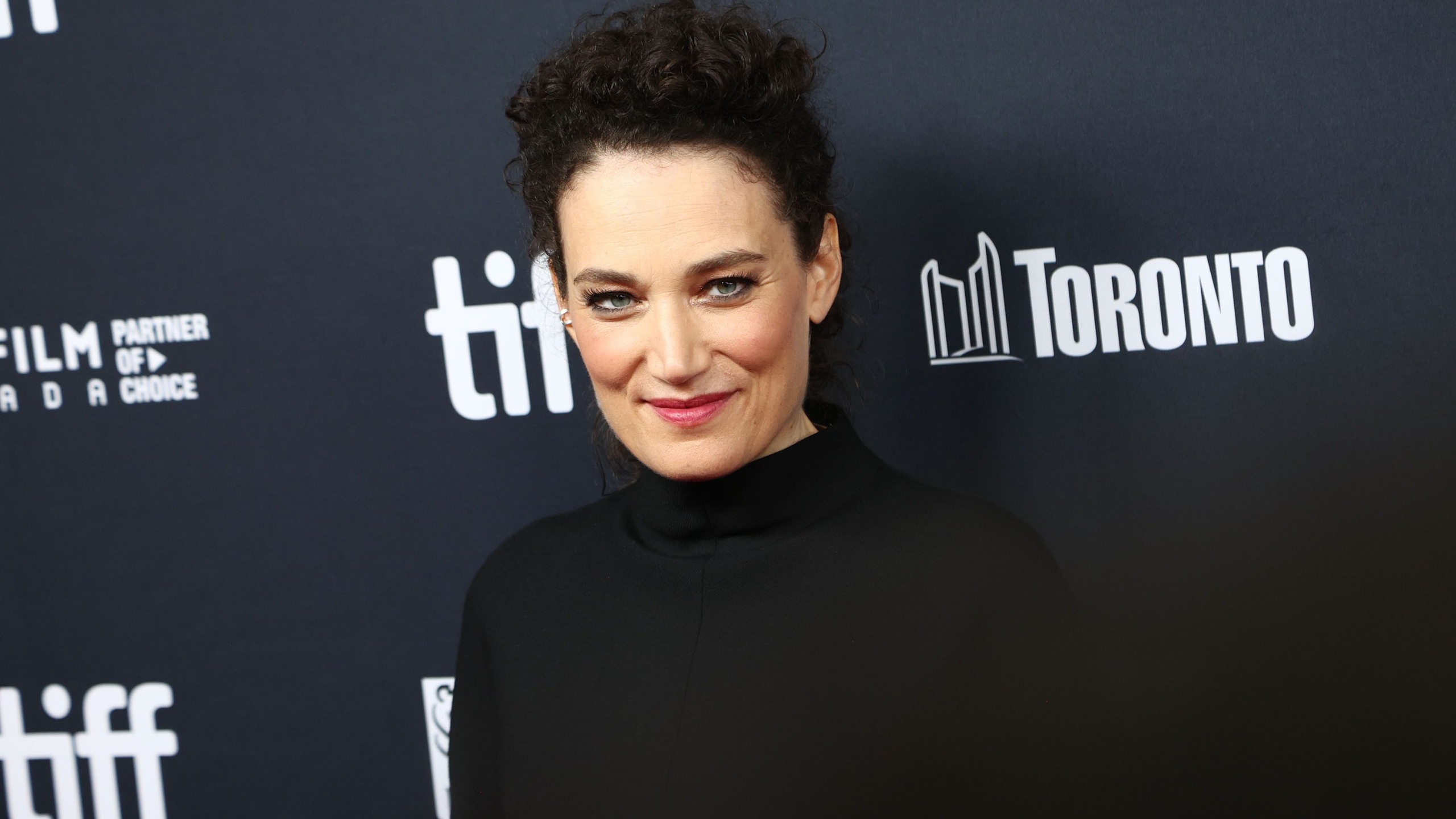Coralie Fargeat has always zigged where others zagged. But knowing what she did and did not want to do helped her to focus her goals. She grew up in Paris on a diet of American movies, which built her taste for genre films. As a teenager, she shot “Star Wars” remakes with her little camera in her backyard.
“The ones that were resonating with me that were going out of the real world, out of reality, were more English-speaking genre films,” she told IndieWire at the Toronto International Film Festival, where her Cannes body horror breakout “The Substance” (MUBI, September 20), her second feature starring Demi Moore as an actress fighting her age with radical chemistry, won the TIFF People’s Choice Midnight Madness Award. That movie, in which Margaret Qualley plays a younger version of Moore’s character, is fed by her favorite Hollywood pictures: “Rambo,” “The Fly,” “Robocop,” “Mad Max,” “Star Wars,” and “Indiana Jones,” movies that took Fargeat “outside of the real world, of realism, of everyday life, which I was struggling with. The exciting life was happening in movies.”
That drove Fargeat to pursue becoming a film director from the age of 17 or 18, when she started making shorts. The film school she wanted to go to required three years of general academics, so Fargeat beavered away studying political science in Paris. “After the three years, I said, ‘I don’t want to do school anymore. I want to start being on set.’ So I started by being a trainee on movies.”
Her first gig came about after she approached an assistant director of a movie shooting on her college campus and asked him for a job. He called two months later and offered her a trainee position on an Alain Berliner movie — “Passion of Mind,” 2000 — starring Demi Moore, and shooting in France. She brought coffee to Moore in the morning, made copies, and watched “the life of the film behind the scenes, which is the real life of how you make a film.”

Fargeat’s path into an industry that was not interested in what she wanted to do was to form a group of six like-minded filmmakers who helped each other make shorts. “When I wanted to start to make my own films, people looked at me as if I was an alien: ‘Sorry, ma’am, we don’t do this here,’” she said. “It’s tough, and it’s also understanding how the industry works, so you can make your way, to sneak into the reality of what you have to deal with. I created a group with some friend directors. We had directed short films, and we all wanted to make genre films, so we all felt rejected. We gathered once every month. We were inviting people from the industry to learn from their experience: how the French industry was working, how you get a movie financed here. We met in film festivals and started inviting producers, directors, film distributors into our tiny living room, with pizza.”
With her lessons in hand, Fargeat knew not to aim too high for her first movie budget, and to find good partners who could support her at the right scale. She delivered her first feature film, “Revenge,” a half-English, half-French actioner with minimal dialogue, in 2017. “It was one of those more visual movies that we tend to do less in France,” she said, “where we’re more into intimate drama, realism, psychology.”

When Fargeat made her second short, she made it sci-fi. “This helped me with my scripts, that I understood had to be super simple,” she said, “not an expensive budget. Keep it simple, so you can put your own creativity in the way you’re going to craft it. But don’t write that the house is going to explode, because you won’t have the budget to make it explode. So find another interesting way to make some scenes interesting in your own way. And to go with those low key ways of doing it, but striking. Money, or a big house for a set, that’s not what’s going to make your movie distinctive. Find what no one else would do the same way. I learned how to express my own identity.”
It occurred to Fargeat that she didn’t need to be like other filmmakers. “I wasn’t thinking like everyone else. ‘OK, make it a strength. Go for it. Accept that. It’s who you are, and don’t be shy of it.’”
The nugget of “The Substance” was the relationship that you have with your image and yourself, she said. “How you are viewed and how you exist in the world according to that, and the violence that I grew up with. In every age of my life, I was thinking, ‘Oh, what is worse, if I’m pretty, if I’m not pretty, if I’m seen, if I’m not seen, if I look like this?’”

“Revenge” portrayed a “young, sexy, nice Lolita,” said Fargeat. “And as soon as you create a problem, we push you, and we erase you.” “The Substance” came from Fargeat passing her 40s and going toward 50. “I had this huge wave of: ‘My life is going to be over. I’m not going to be interesting anymore. No one is going to look at me anymore. My life is finished.’ I had those huge, violent thoughts that were so powerful that I said, ‘The time is now to do something with it.’”
“Revenge” was a success, which helped Fargeat set up “The Substance.” “‘Revenge was my first feminist expression,” she said, “but I didn’t know it at the time, it was after the movie was made that I discovered that. And for this one, I wanted to do it on purpose, to really address what I was feeling in terms of inequality. There is anger in all of us. The level of violence I need to put on screen expresses the inner violence that all those issues have created inside of me. They are my tool to address it and to say something about it, and make something with it that I hope will hit people’s minds.”

Bilingual Fargeat writes in both French and English or Franklish, “a mix of English and a bit of French,” she said. “And I write all the descriptions in French. My scripts are almost like novels. I don’t follow all the rules. That’s my way of getting into crafting all the sound, everything I want the audience to feel, everything that I want to create.”
For “The Substance,” when her spec script was ready, Fargeat sought out producing partners who would support her and give her freedom as well. “I wanted to be a producer on it,” she said. “The movie is violent. It’s about women. It goes pretty far. I knew I needed to have strong partners surrounding me to be motivated.” She picked Working Title’s Eric Fellner and Tim Bevan, who loved the first film. “With them, she said, “It’s not going to vanish at the first difficulty. ‘You can be the person to support me, to protect me, and also to allow me to accomplish what I want.’”
During the casting process, Fargeat heard a lot of “nos.” “It was going to be a part that was tough to cast, because it was confronting your own phobia,” she said. “It wasn’t going to be easy. And when we were thinking about some names, we were thinking about Demi Moore.” At first, Fargeat didn’t want to waste time getting another inevitable turndown. But she decided to send the script anyway. “We have nothing to lose. But I was 100-percent convinced she would never be interested in doing this.” But Moore reacted positively. “Of course, she has this iconic resonance,” said Fargeat. “If you look at her past work, you can see it’s there. She’s been dealing with it all along.”

When Fargeat met Moore, she needed to make sure the actress understood what she was getting into, “how far it would go,” said Fargeat. “And there is a lot of technique involved, technical stuff. A prosthetic influenced a lot the way we were shooting. And also, we were doing the movie in an indie way, with not a huge budget regarding everything we had to do. We were shooting in France. We were doing it in a more artisanal way. We hadn’t a huge Hollywood production.”
Moore had to be willing to go all the way with the finale’s outsized body horror. “The end was written very clearly on the page, on a super-detailed level,” said Fargeat. “I had done a lot of mood board books, visuals with graphics to show her. What really surprised me was how she went for it. That’s what made me understand that she was ready to take [the] risk. The movie is about women’s bodies, and to me, I couldn’t find a better way than body horror to show the violence that we can do to ourselves. That was the real metaphor. There is symbolism to play with that flesh: ‘This is what we have inside. There is the white, lovely smile. And behind this, it’s a whole other world. I’m going to show you the inside world. And yes, it’s that violence, it’s that bloody, it’s that uncomfortable, and it can be that fucked up.”

The two women had many discussions of the meaning of the film, “what it meant to us on the personal level, for both of us,” Fargeat said. “The thing we’ve been struggling through in our lives. I read [Demi Moore’s] autobiography, and she had some tough years in her personal life. She was in a phase where she was stepping again to be in control of herself. That’s what made her feel comfortable with showing vulnerability on screen, because I think she was strong inside. She was in a good place with herself. She fought to get where she had to be. She made herself on her own, coming from nowhere, fighting in a place that was a totally male-dominated industry, being ahead of her time in many regards, like doing this naked picture of her pregnant, taking a lot of risks and having a lot of feminist statements, wanting to be paid as much as her co-stars.”
Finally, “The Substance” is a smart, witty, feminist, dark, twisted fairy tale. “This movie comes from all those injunctions that come from the fairy tale,” said Fargeat. “You have to be the beautiful princess. The prince is going to save you, and everybody’s going to love you because you’re going to be beautiful and have those dresses and be nice and gentle and smile. And from a very young age, it shaped the role model that you’re supposed to be. But I felt like the monster. I was not at all this. I wish I were the blonde beautiful girl that the prince is going to love. But I wasn’t at all.”
Fargeat added, “Society, especially in my time, was very gendered: what toys boys play with, which movies boys look at. All the movies that I was watching at the time were not considered to be for girls. And when a woman gets over her 40s, it was going to be the moment where she can’t have kids anymore, how much it’s switched, totally the way she’s looked at, the fact that she’s not going to be useful, she’s not going to be sexy anymore, and she can’t have kids. All this is a tremendous, huge, still unbalanced relationship model that creates so much violence and inequality.”
The question of the moment, as “The Substance” meets a rousing response at Cannes and Toronto and its Los Angeles premiere, is whether the Academy will look past the body horror and see the beautiful movie Fargeat has made. Moore has never even been nominated for an Oscar. She’s due.




